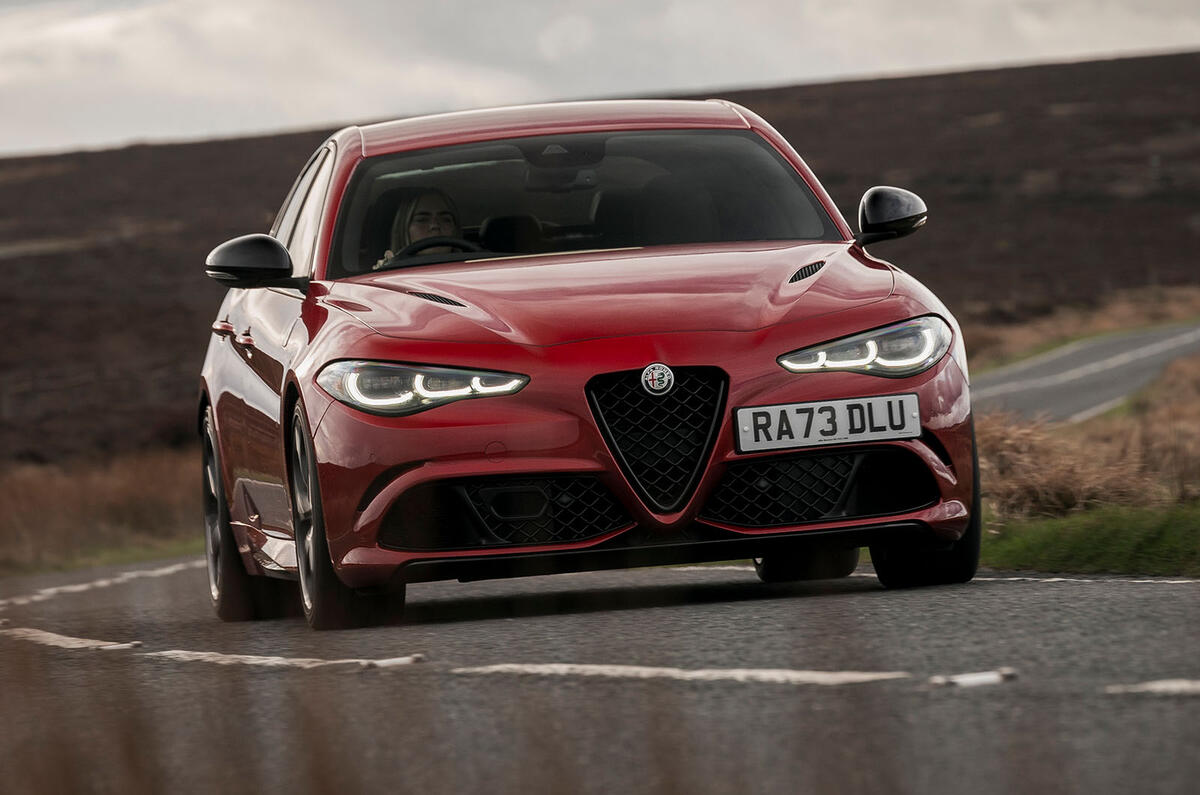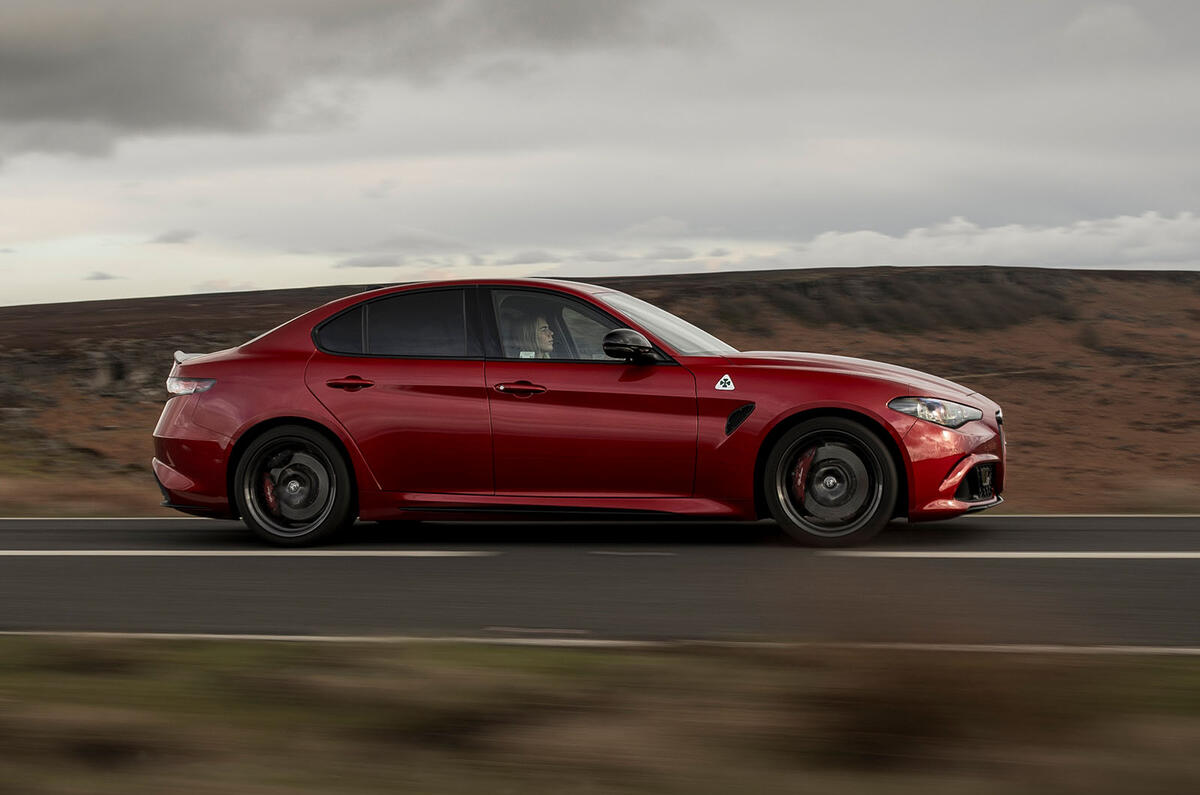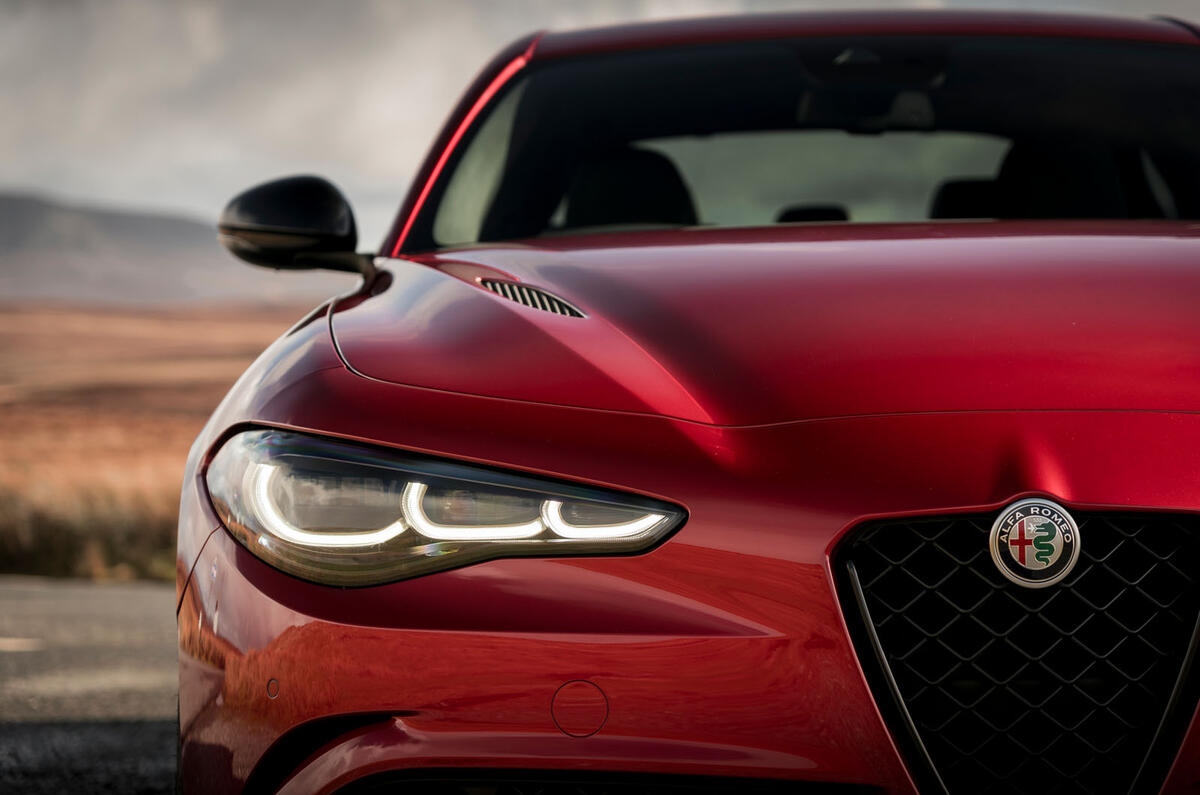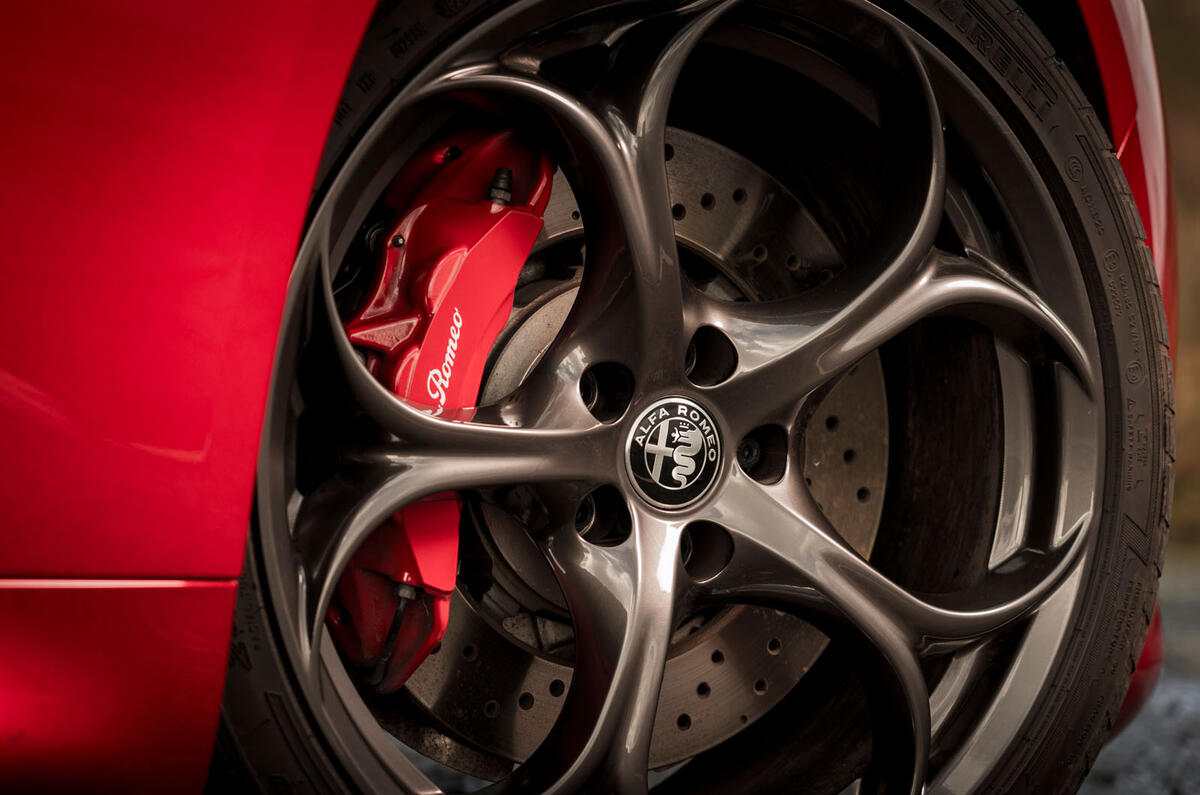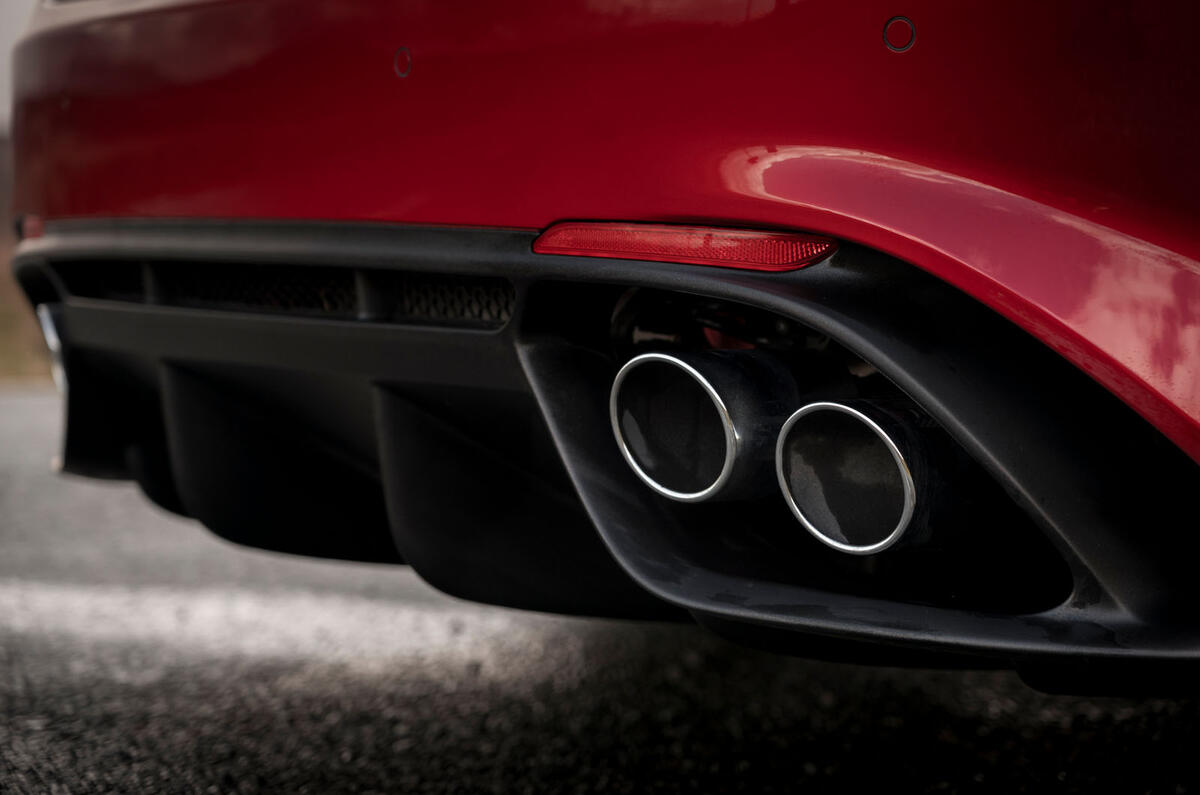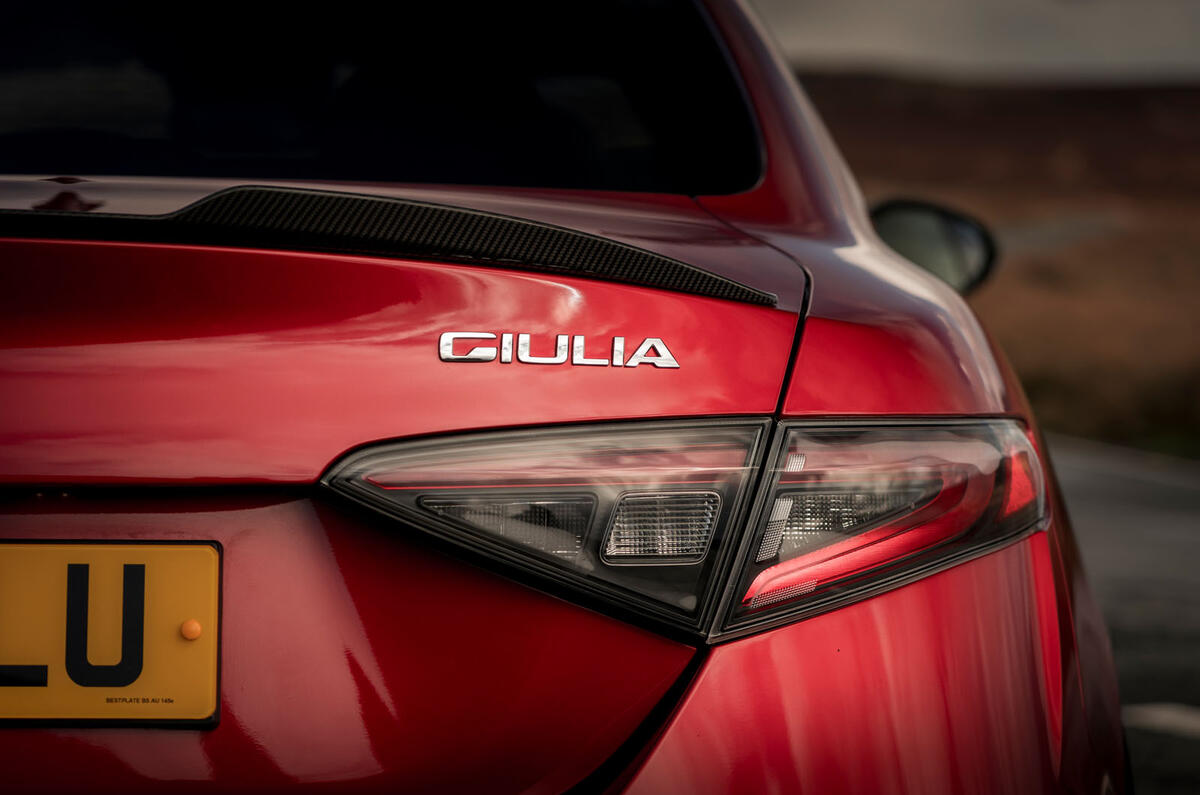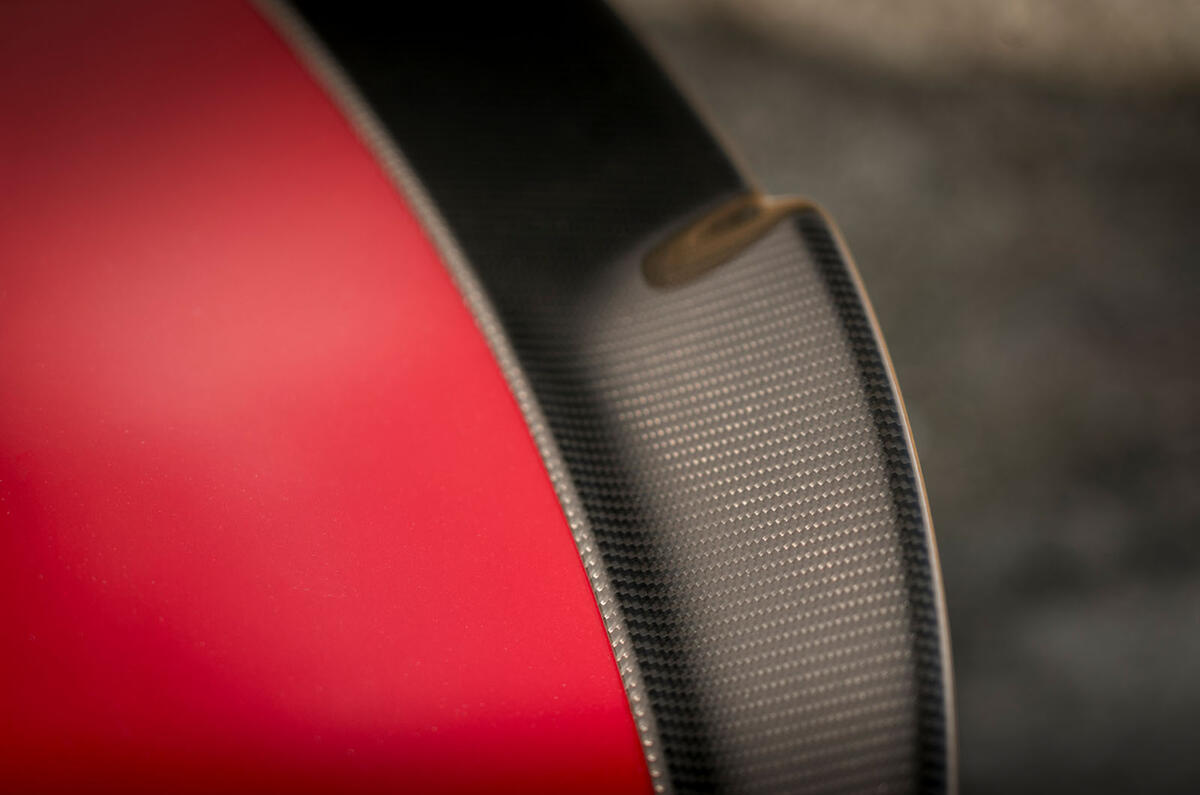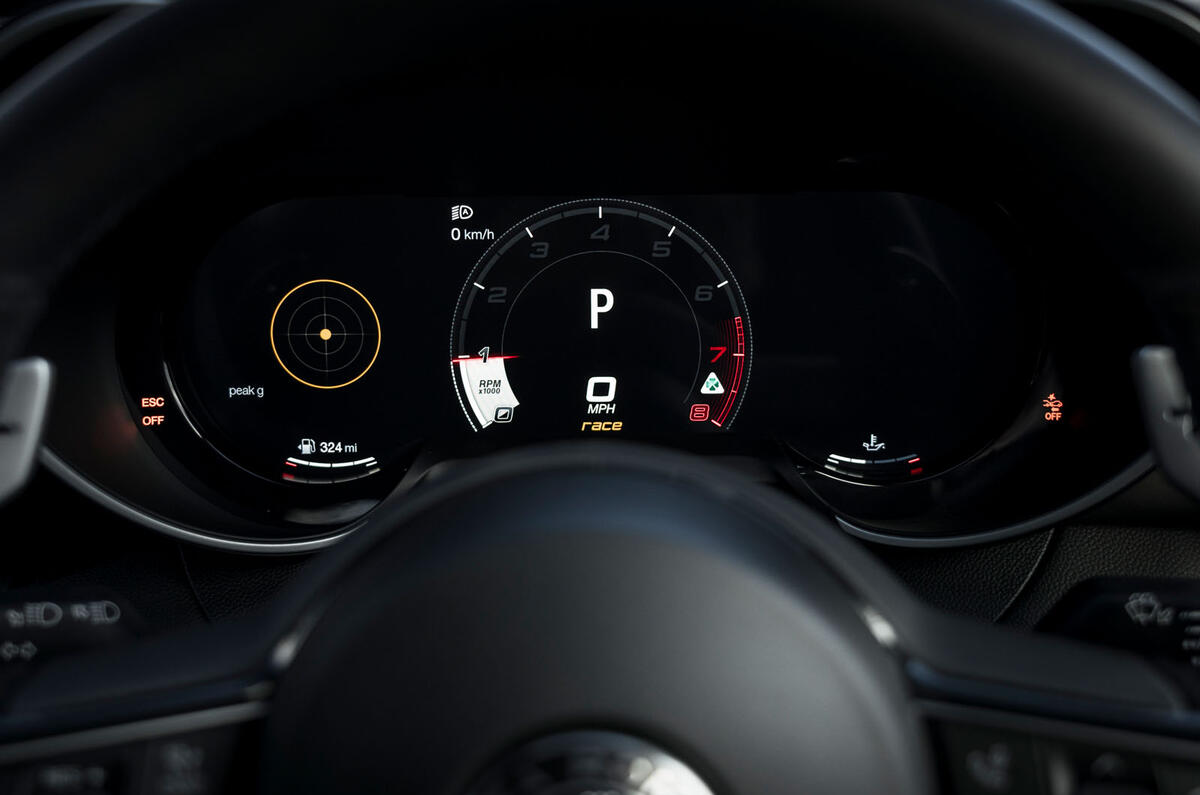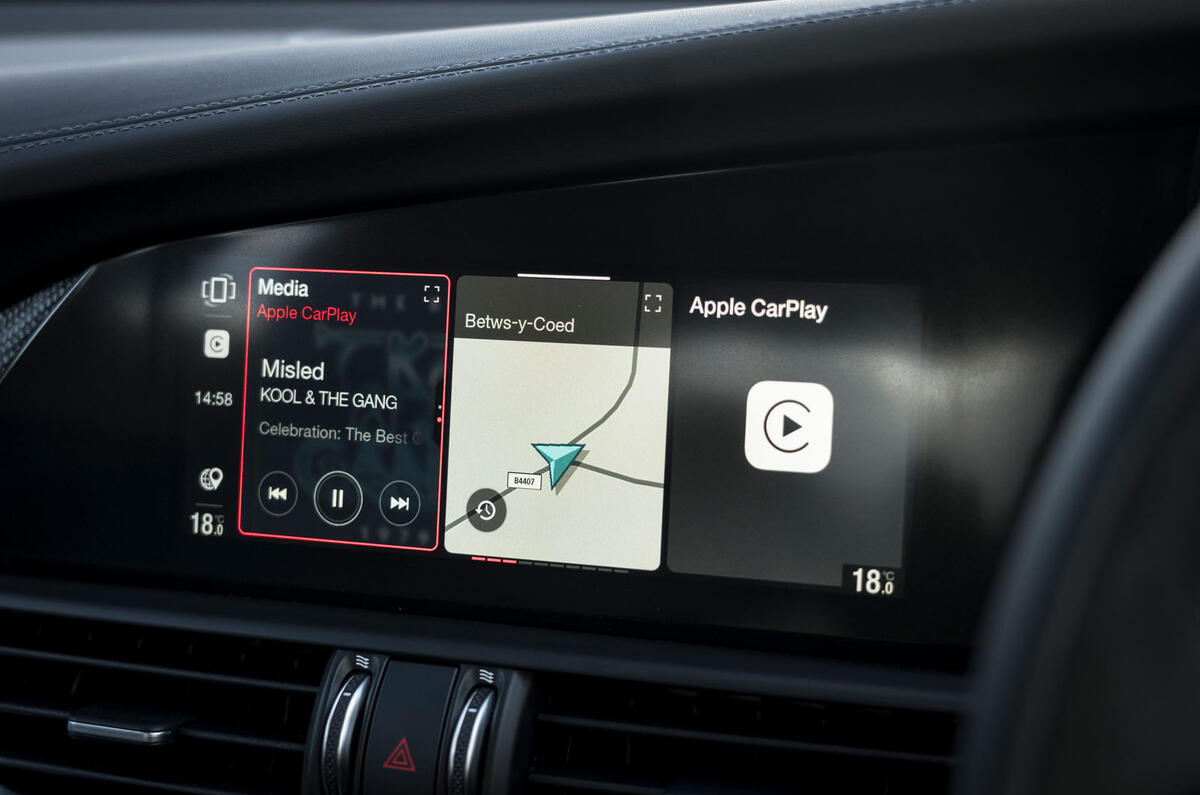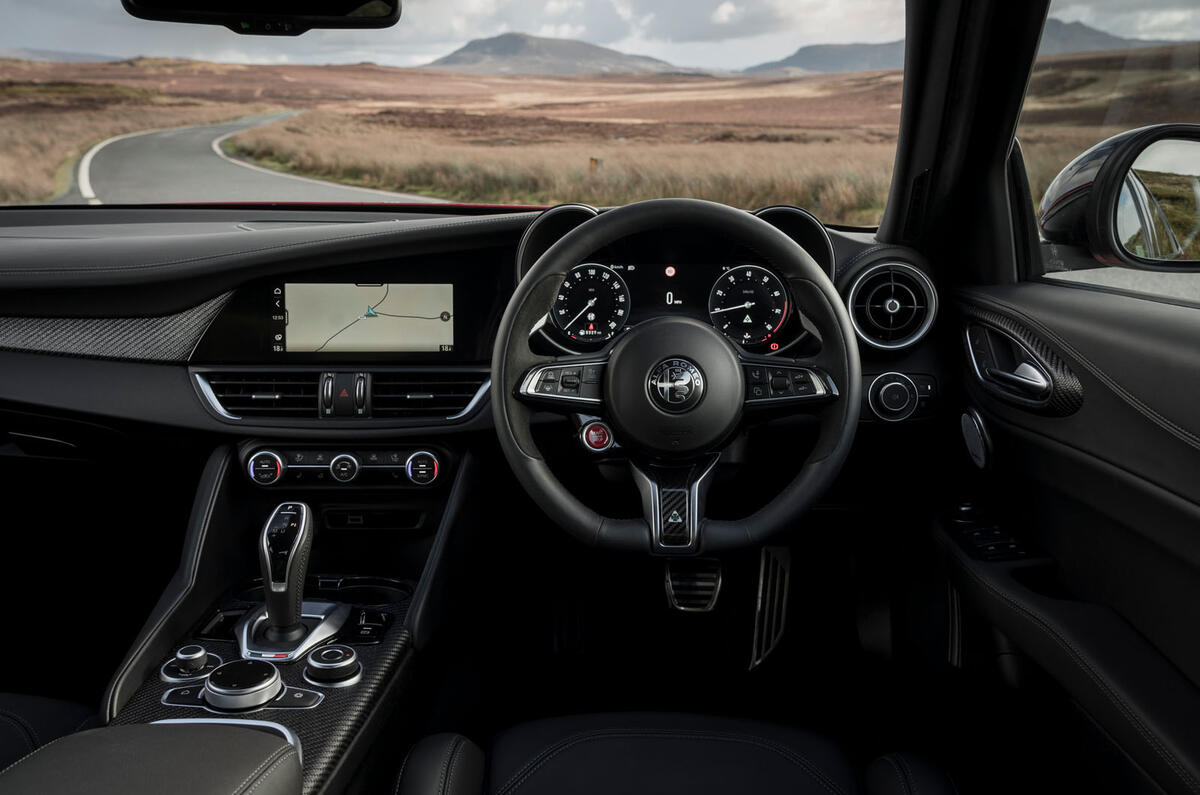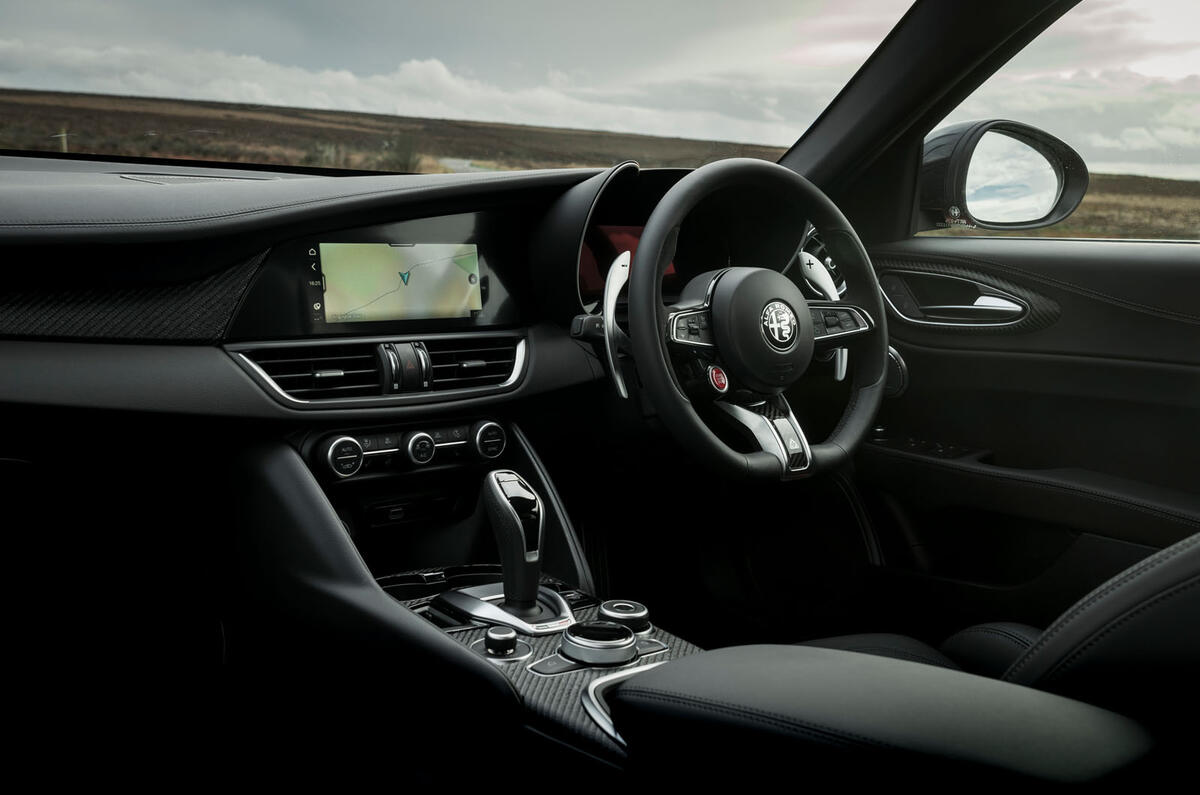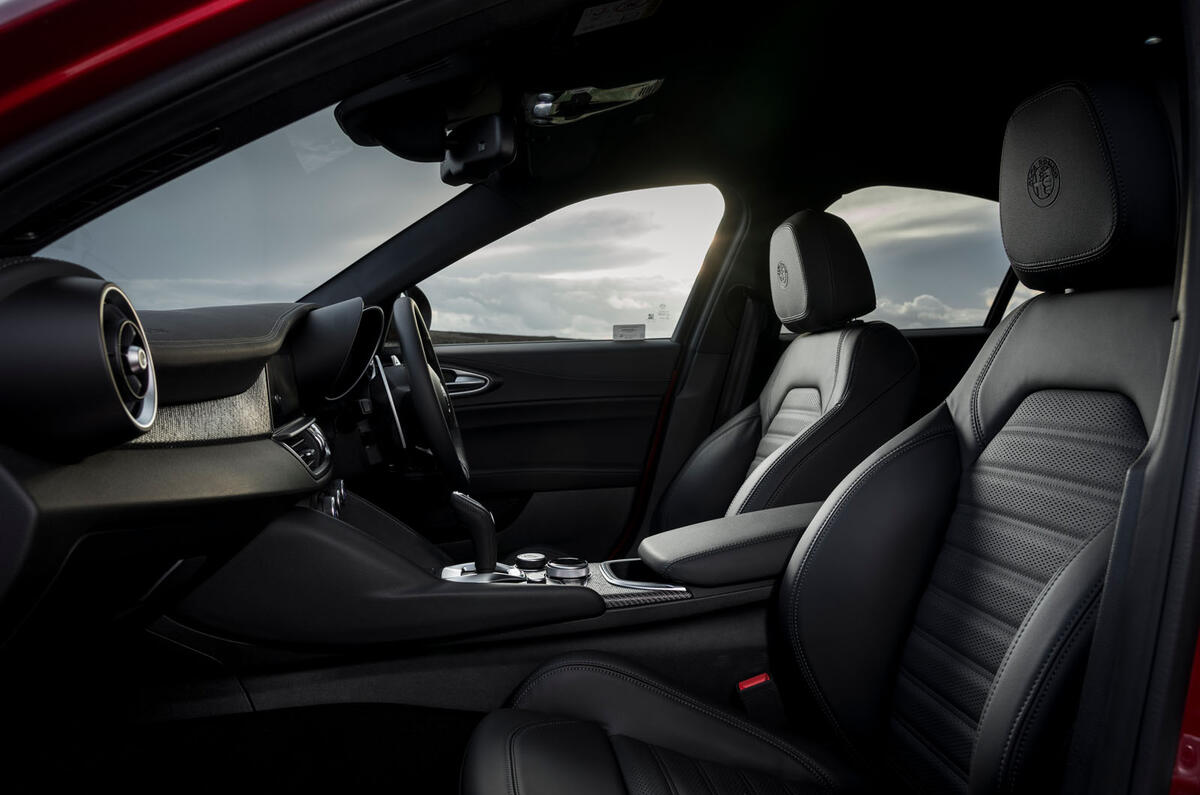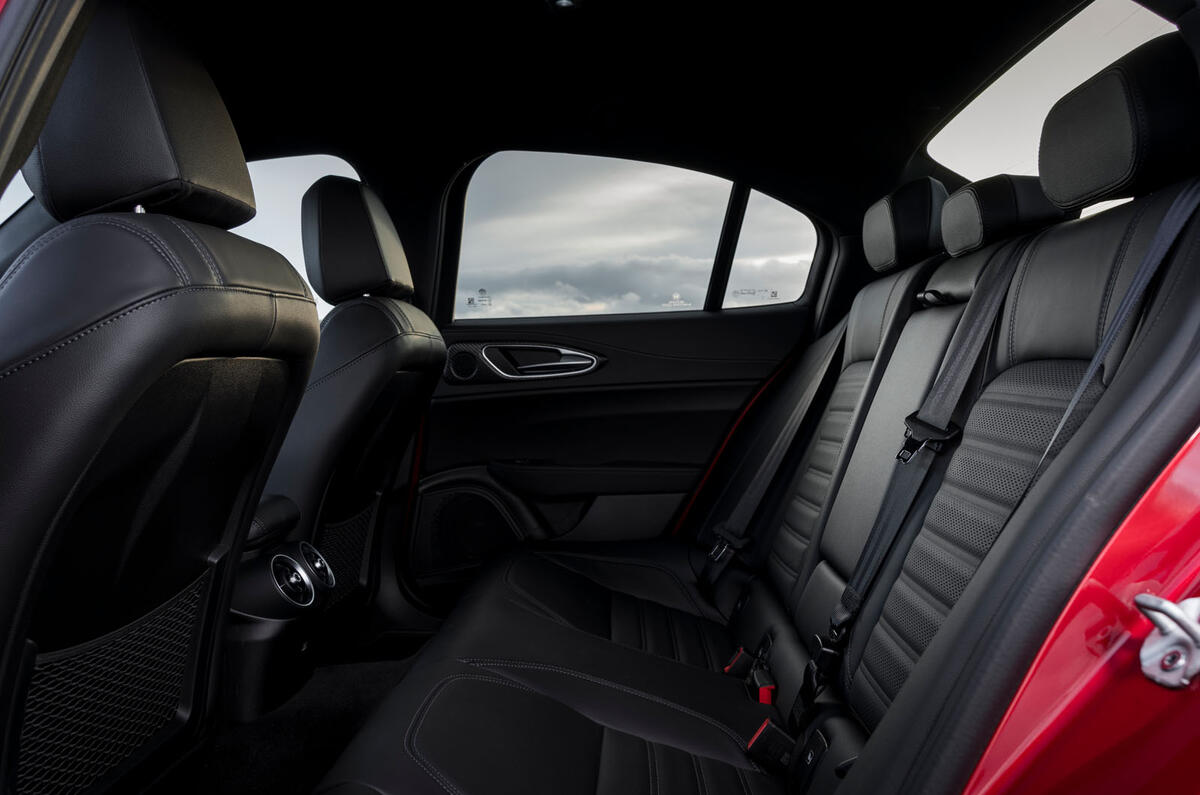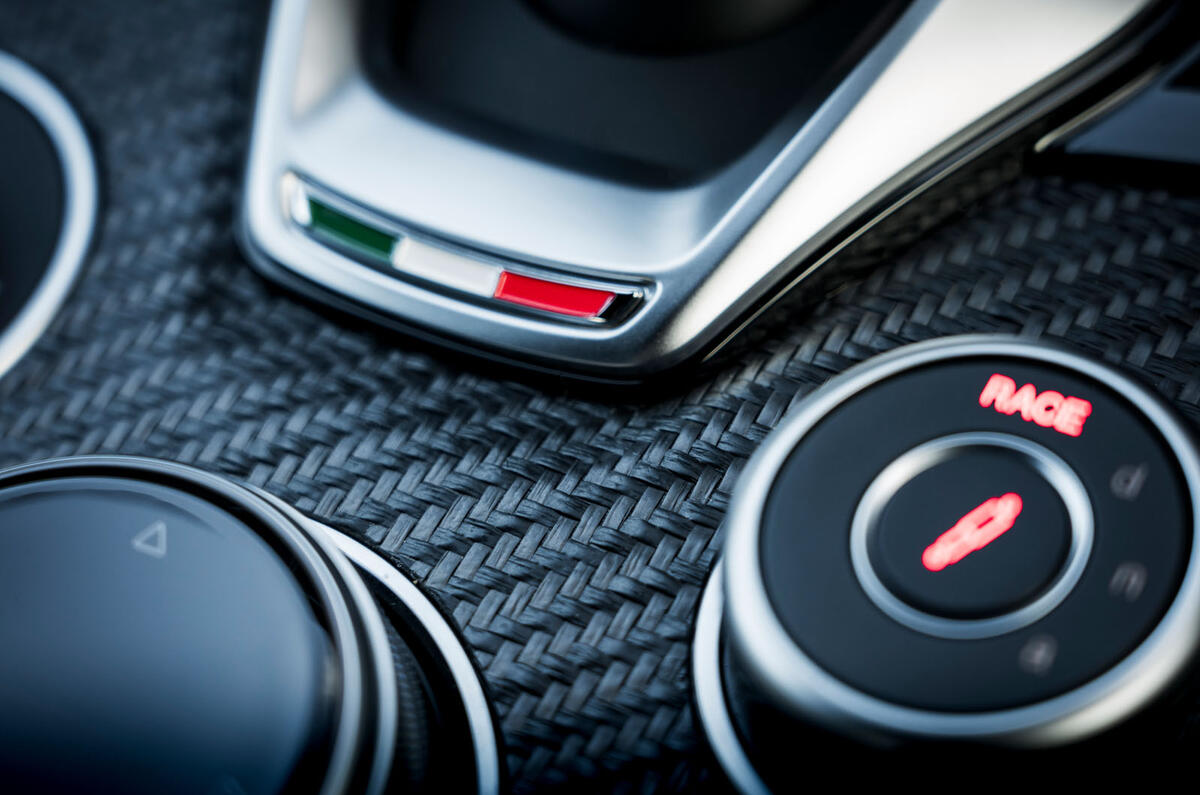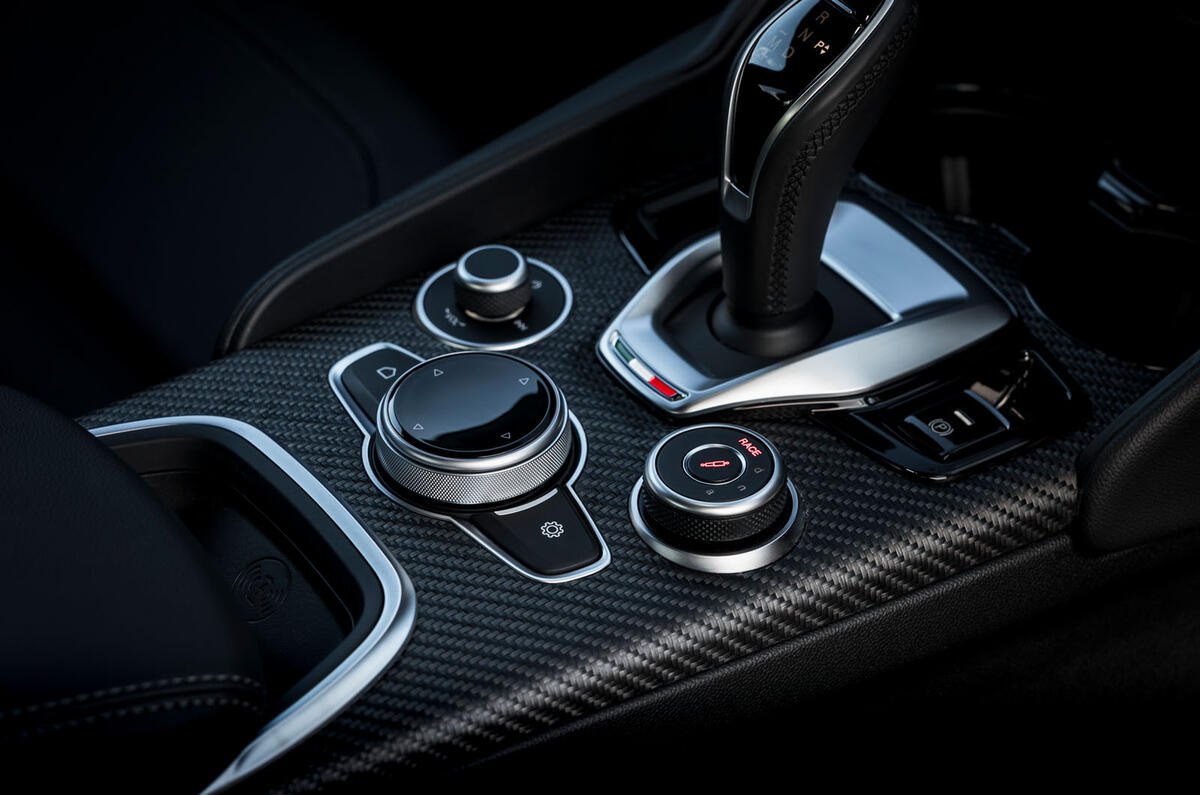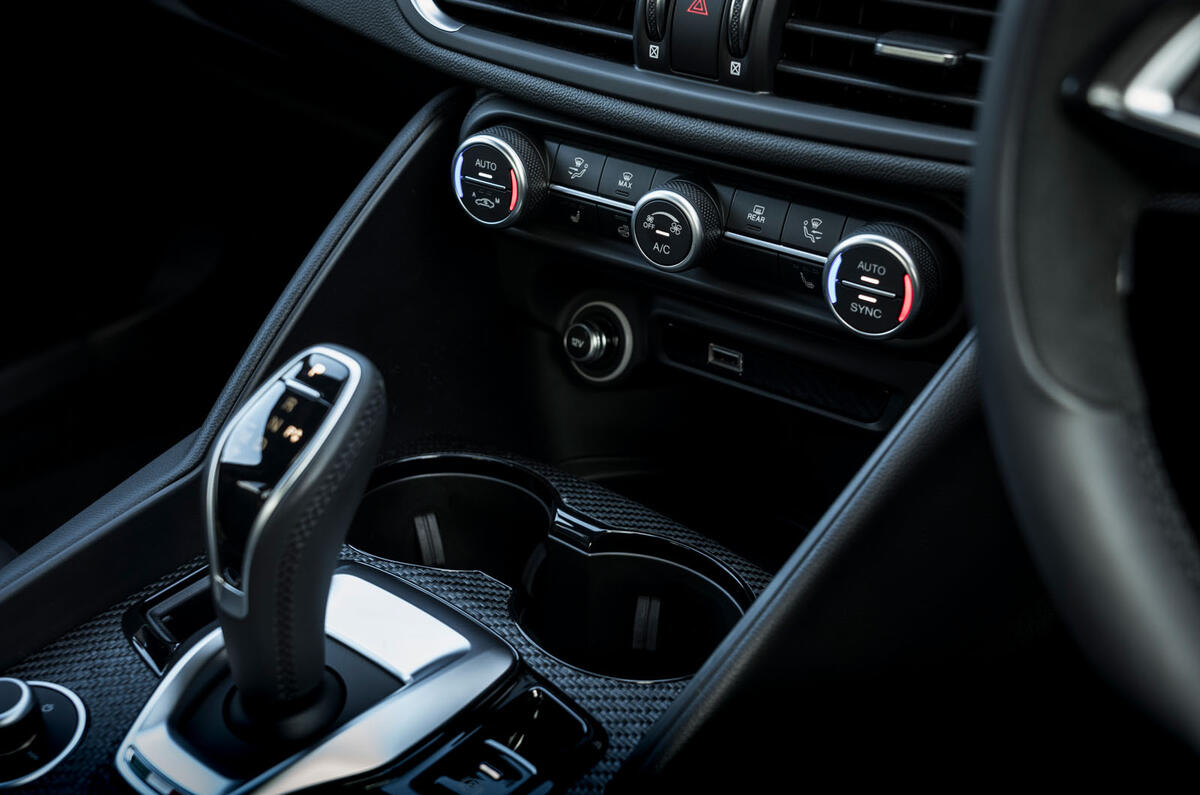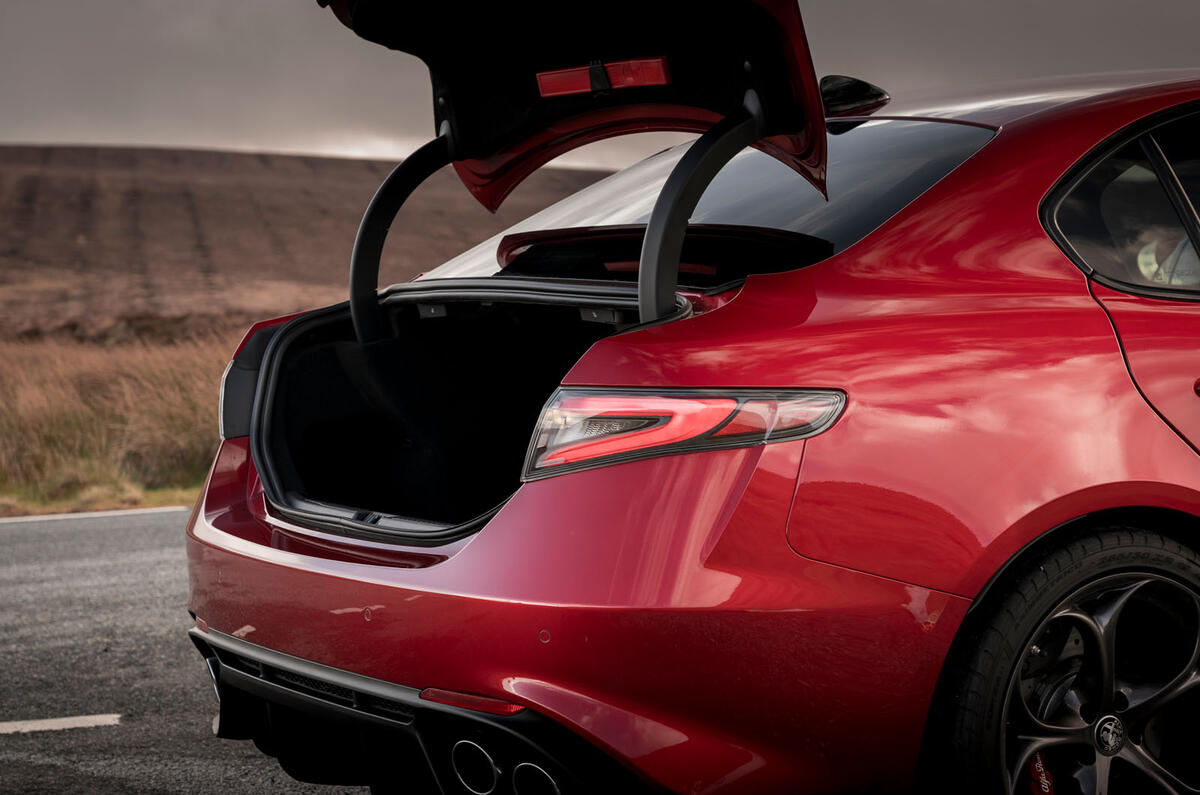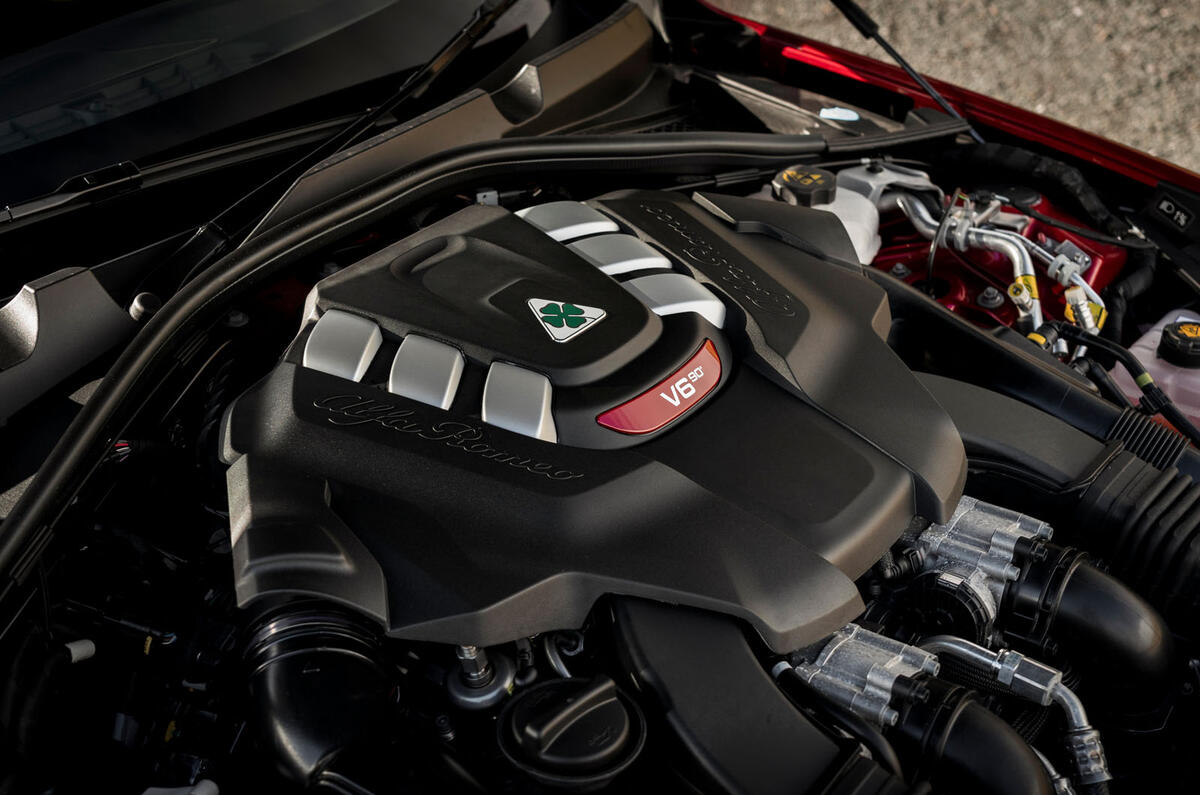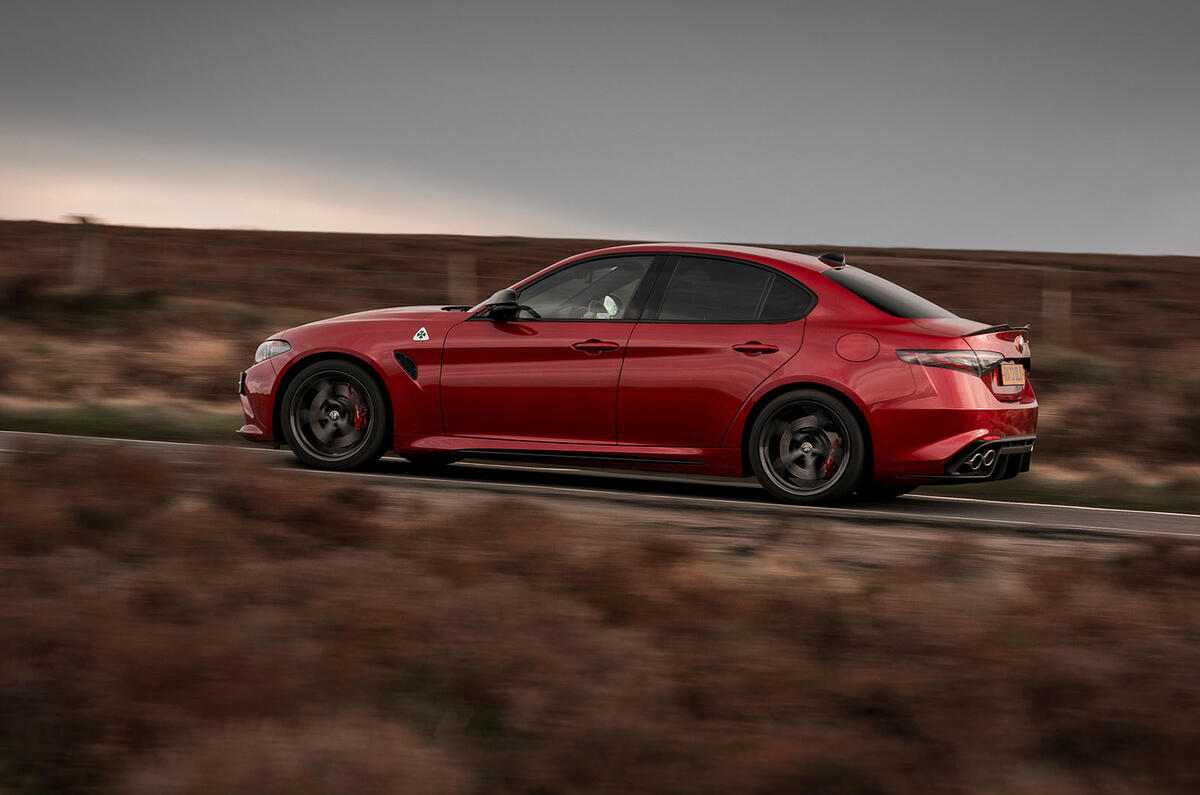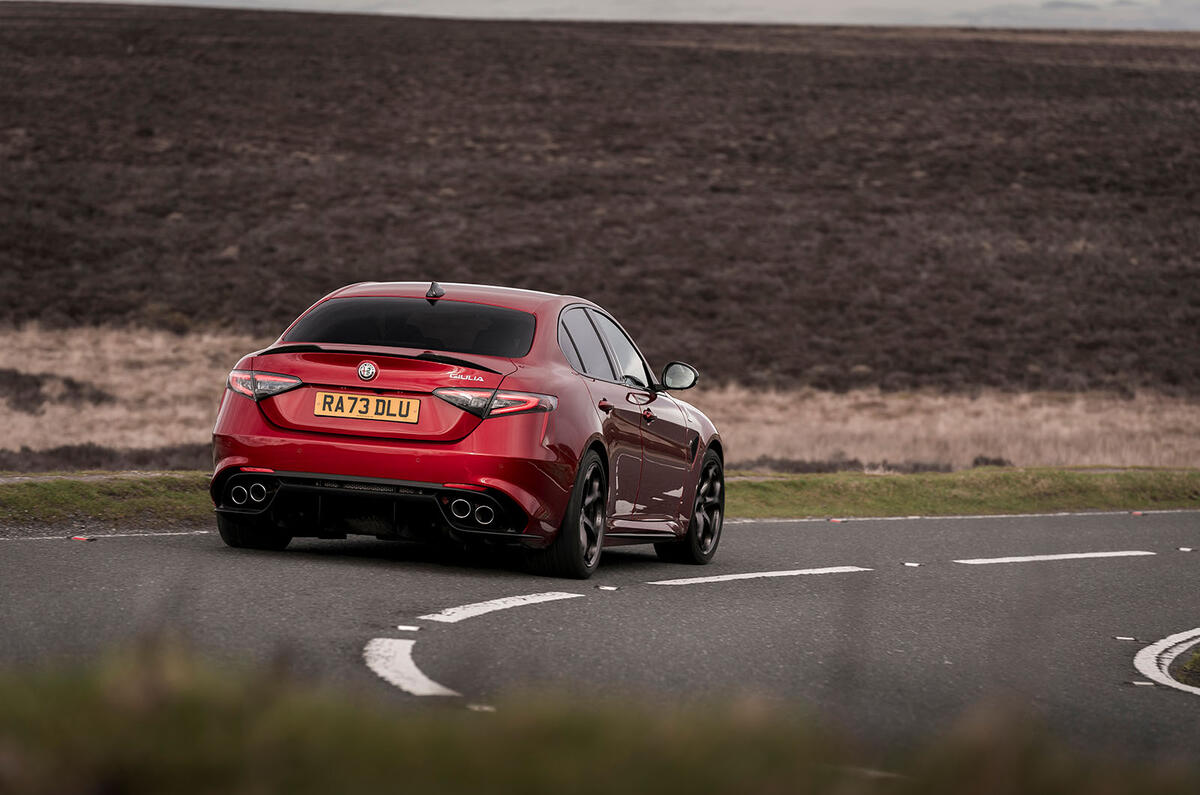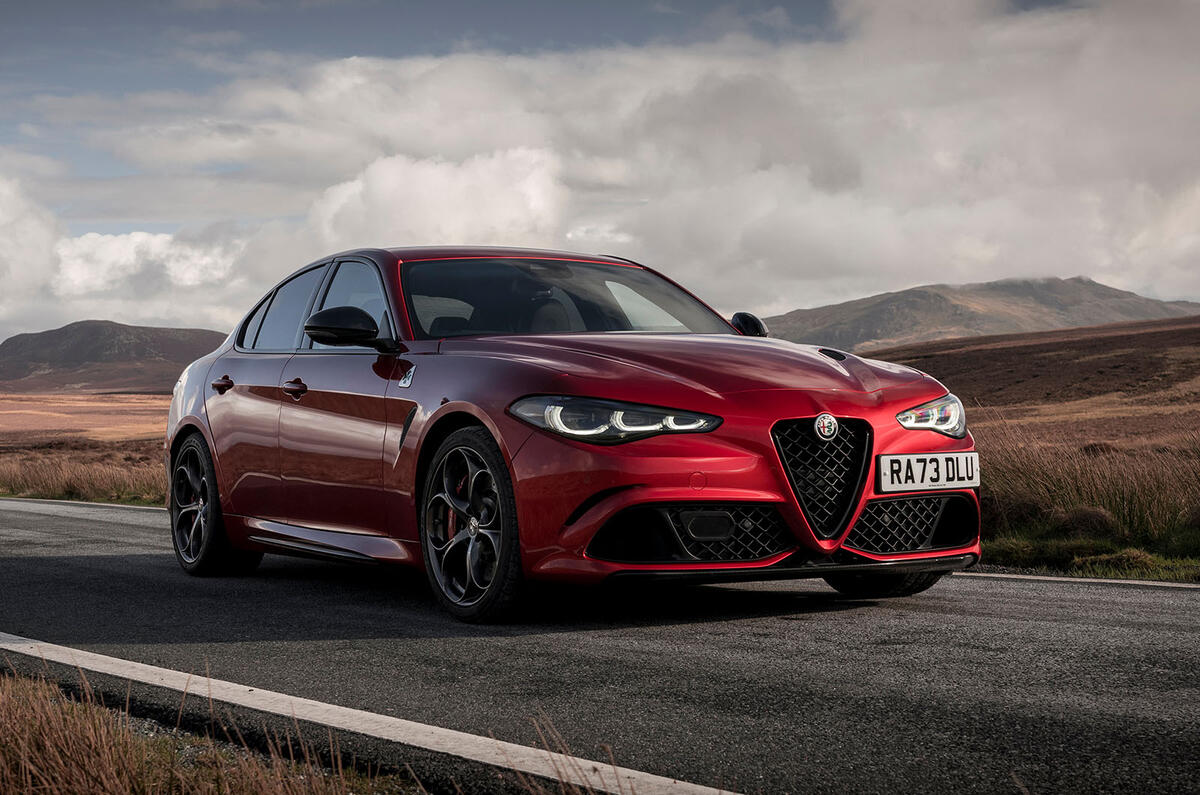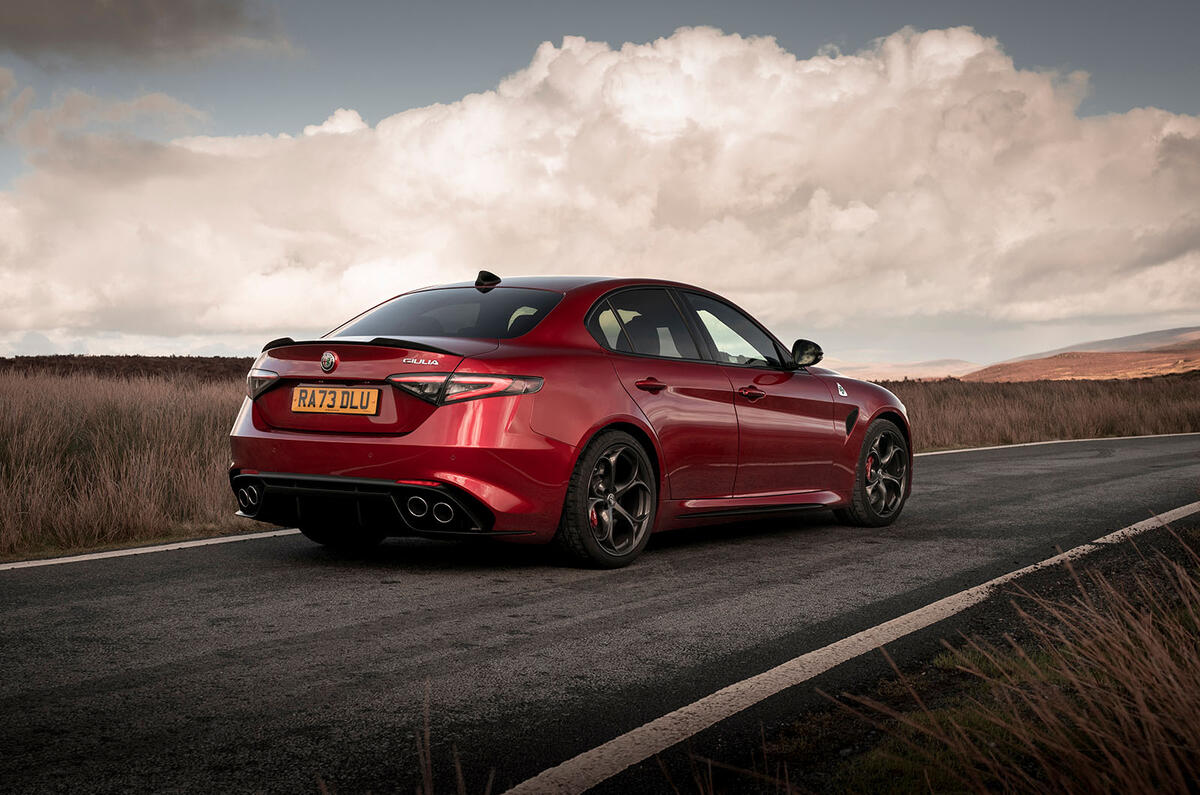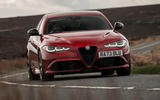Here’s what continues to impress us most about the Alfa Romeo Giulia: it’s a sensational car dynamically – and if you’d spent any time around Alfa Romeos during the previous decade, you wouldn’t have seen that coming.
For a start it rides well. Not in a lolloping, loping way, nor in a keyed-down, brittle way, but with a blend of impeccable body control and a deft ride that is still the equal of anything in the class It’s like Ferrari or (pre-Chinese) Lotus had set out to make a compact executive saloon.
There’s multi-state control for the adaptive dampers, so as you put the engine into angry mode you can still pop the suspension back to a softer setting – and you’d probably want to on most British roads.
On a good smooth surface the Giulia is fine in its firmest mode, while on broken surfaces it’s ideally planted in its softer mode.
If anything, its ride and handling blend feels most like that of a sporting Jaguar (which we mean entirely as a compliment), so it is set up beautifully for British roads.
The steering suits our roads too. It’s quick to steer, at 2.25 turns between locks, but there’s no hint of nervousness, and although there are more feelsome racks in the sports car world, the Alfa’s firm rim means that its messages filter through to the driver better than they do in almost any of the competition.



